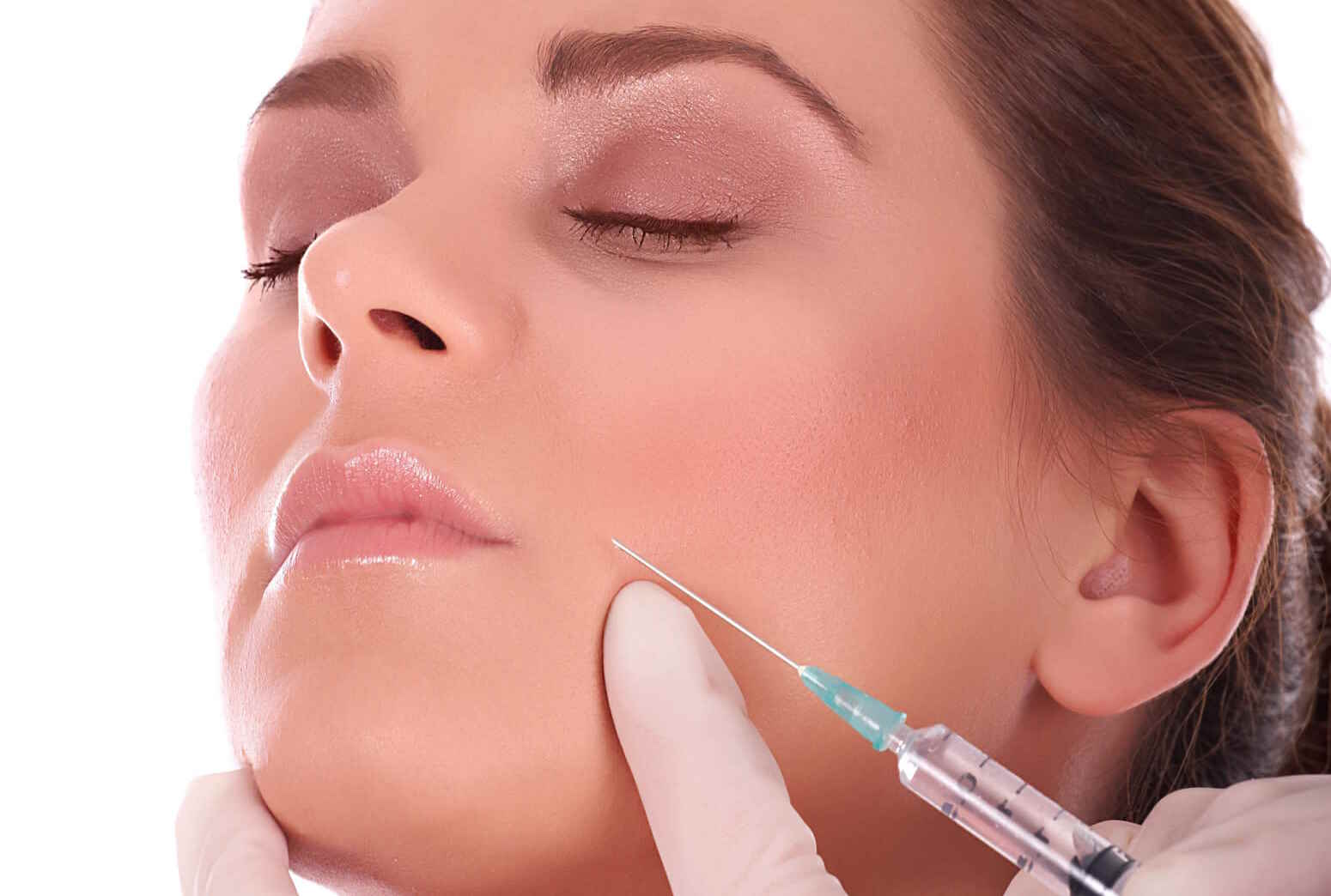Dental bridges in West Palm Beach can be a simple solution to tooth loss. Using the surrounding teeth as support, we can place a dental restoration requiring no surgery, extensive waiting times, and fewer aftercare instructions. For that reason, they’ve become a go-to solution for many patients. However, before considering any treatment, understanding it in detail is crucial to determine if it is right for you. Here are some frequently asked questions about dental bridges that can help you learn more. Frequently Asked Questions About Dental Bridges If you’re considering dental restoration, bridges stand out as an accessible and quick solution. But to understand this treatment, it can be crucial to ask yourself these questions: What Are Dental Bridges? A dental bridge is a long-term device that uses a pontic, or artificial tooth, to fill in the space left by a missing tooth or teeth. The abutment teeth (the natural teeth on either side of the missing space) usually have crowns placed on top to create the bridge. The pontic covers the lost tooth, which is cemented into place and bonded to the abutments. Bridges can be fixed or removed. They work well for people who have lost teeth but still have healthy neighboring teeth to support them. What Types of Dental Bridges Are There? There are four main types of dental bridges. What is the Process for Getting Dental Bridges? One of the benefits of bridges is that they’re simpler and easier to get than other restorative options, like implants. The key steps of the bridge placement process include: Does Insurance Cover Dental Bridges? While it depends, most dental insurance plans cover bridges under major restorative services. However, they may not cover the entirety of the treatment. Coverage usually ranges from 40% to 80% of the cost, depending on the plan, whether you’ve met your deductible, and the remaining annual maximum benefits. Additionally, you may still have out-of-pocket costs if you opt for premium materials like all-porcelain or zirconia. How Long Do Dental Bridges Last? The lifespan of a dental bridge depends on several factors. The most crucial thing to keep in mind is that a dental bridge is not infallible. Similar to your natural teeth, a dental bridge’s lifespan can be significantly shortened if you neglect it or engage in behaviors like bruxism, or teeth grinding. While many dentists predict that a bridge will last five to seven years on average, it may last longer or even a lifetime with the right maintenance. How Can I Prevent My Dental Bridge From Getting Damaged? Proper care habits can considerably improve the lifespan of your dental bridge. Like normal teeth, your bridge is susceptible to cavities if you don’t brush and floss properly. The bridge’s artificial teeth may not be impacted by decay, but the abutment teeth can. Severe decay could affect the bridge’s attachment to these teeth, ultimately leading to failure. Furthermore, blunt force can erode or shatter a bridge. Chewing on hard materials, such as ice, can put pressure on the dental bridge’s attachment to the abutment teeth. Additionally, grinding your teeth may put additional strain on the bridge. The best ways to keep your bridge safe are to avoid chewing on hard foods and objects, be aware of the symptoms of grinding (such as migraines and jaw pain), and visit your dentist regularly. When Do You Need to Replace a Dental Bridge? If you have a dental bridge and notice it feels loose or different, don’t wait until your next dental appointment. Call us as soon as you notice anything amiss. If your bridge is broken or damaged, we will do everything possible to fix or replace it as needed. Get Dental Bridges in West Palm Beach with Confidence Tooth loss is more than an aesthetic concern: it can be the triggering factor that puts your entire smile at risk. When a tooth is lost, the surrounding ones shift toward the available space, causing misalignment and bite issues. Moreover, missing teeth can make it harder to eat and speak and can even affect your confidence in your grin over time. The team at CJ Dental is here to help you prevent these concerns. Together, we’ll explore all available options to restore your smile to optimal condition, so reach out!
Are You a Candidate for Dental Botox®? All You Need to Know
Temporomandibular joint dysfunctions are intricate and complex disorders to treat. Due to the complexity of the jawbone joint and the wide variety of factors that can cause TMD, doctors often struggle to diagnose and treat this condition properly. This often leaves patients to suffer for longer. Fortunately, for these individuals, dental Botox® may be the unsung hero. Besides helping people keep their youthful appearance longer, Botox® relaxes the jaw muscles, allowing patients with TMD to reduce discomfort and regain the ability to open their mouth fully, eat, and speak easily. However, not everyone is a candidate for this treatment, and here’s why. What’s Temporomandibular Joint Dysfunction? Temporomandibular joint dysfunction, or TMD, is a disorder that affects the jaw joint and the muscles that control it. This joint at the base of the skull is a very complex part of our body because it permits side-to-side and up-and-down movement. For this reason, diagnosing and treating TMD can be difficult. TMJ disorders can cause varying amounts of discomfort. Persistent jaw pain and limited jaw movement are typical symptoms. The discomfort is not always consistent: most cases of TMJ disorders resolve themselves within a short period, usually within a couple of months. However, they tend to reappear over time. Sadly, TMD is a highly common condition. Approximately 12 percent of Americans suffer from TMJ disorders at some point in their lives. With nine women for every one man experiencing excruciating pain and limited jaw movement, women are impacted more frequently than men. What Benefits Does Botox® Have for TMD? Overexertion and tension in your TMJ can result in headaches, jaw pain, and other undesirable symptoms. Numerous treatment options try to ease patients’ discomfort by encouraging relaxation or promoting orthodontic therapies to realign the bite and improve the patient’s resting position. But these approaches are not always effective. However, TMD symptoms can still be excruciating and seriously incapacitating for some people. Imagine being unable to speak, eat, or even smile without experiencing pain whenever you opened your mouth. In these severe situations, Botox® is frequently advised. Unknown to some, Botox® is actually a toxin that prevents a muscle from moving for a limited time. When injected into the jawbone, it can help paralyze some muscles, relax the area, and reduce pain and other symptoms. According to a 2017 study, Botox injections may actually lessen TMD symptoms like: Who’s a Good Candidate for Botox® for TMD? More and more patients with TMJ disorders are turning to Botox® as a solution for their pain. This toxin has proven effective when other traditional treatments failed to relieve tension. However, Botox® isn’t considered a first-line treatment: it’s a promising second-line option, especially when symptoms are muscle-driven rather than joint-based. Ideal candidates are people who: Who Should Avoid Botox® for TMD? While Botox® can offer relief to many people struggling with TMD, certain patients are advised to avoid it. This is the case for: Is Botox® for TMD Safe? Yes, Botox® is a safe and reliable method for reducing TMD symptoms when applied by a qualified professional. According to research on animals, Botox® injections may weaken bones, but a 2020 study on humans disputes this. People who are thinking about getting Botox® for TMJ dysfunction should talk to a healthcare provider about the advantages and disadvantages in detail. Additionally, it is fundamental to reach out to a qualified professional. Botox® for TMD requires in-depth anatomical knowledge, and poor technique can lead to complications. Injecting the wrong muscles can worsen pain, cause jaw weakness or asymmetry, and even lead to difficulty chewing or speaking. Poor technique or non-sterile tools can lead to infections, inflammation, or hematoma formation. Additionally, if Botox® affects nearby muscles like the sternocleidomastoid or pharyngeal muscles, it can impair swallowing or even airway function. To prevent all of this, make sure to seek a trained professional that has former success stories to display. How Long Does Botox® for TMD Last? Sadly, Botox® is not a cure for TMJ issues. It is a temporary treatment that wears off over time. A person must repeat the treatment every few months to maintain the effects. The effects of Botox® for treating temporomandibular disorders (TMD) typically last 3 to 6 months. Relief may begin within a few days to two weeks after injection, and effectiveness peaks around 4 to 6 weeks post-injection. By week 12, though, the effects will gradually taper off. The total durability of Botox® depends on various factors, such as the severity of TMD and muscle activity. Patients who use their jaw muscles more intensely, due to bruxism, for example, tend to metabolize the Botox® faster. Explore the Benefits of Dental Botox® for You TMJ disorders are more than an oral issue: they can become a severely disabling condition that doesn’t let you conduct your daily activities with ease. Certain traditional methods like doing jaw exercises or using a mouthguard at night can help ease some symptoms. However, they may not be the solution for more severe cases. Luckily, Botox® offers a reliable, proven method patients can rely on to reduce pain. If you suffer from TMD and want to learn more about this solution, contact CJ Dental today!
How Cosmetic Dentistry Can Enhance Your Smile
If you dislike your smile, there are attractive and safe ways to improve its looks with a cosmetic dentist in West Palm Beach. With artistry and medical knowledge, cosmetic dentists can lighten your teeth, hide imperfections, and boost your confidence without negatively affecting your oral health. There are various cosmetic dentistry treatments you can explore, each aimed to fix specific issues. To help you understand the options, here’s a breakdown of how esthetic dentistry can enhance your smile! What Is Cosmetic Dentistry? Cosmetic dentistry, or esthetic dentistry, is a branch of dental care that focuses on improving the appearance of your smile. Seeing a cosmetic dentist could be your choice if you have: Veneers, dental bonding, and teeth whitening are common cosmetic dentistry procedures. These don’t only seek to conceal flaws, but they also aim to improve your smile in a symmetrical and balanced manner. For that reason, cosmetic dentists have to combine their scientific knowledge with artistic expertise, achieving a smile that doesn’t only boost your self-esteem but also looks and feels natural. Why Would Someone Consider Cosmetic Dentistry? There are many reasons why patients come to our doors asking to learn more about our cosmetic services. Smiles are a universal symbol of friendliness, so people self-conscious about their smiles can appear closed-off and distant because they fear showing them off. On the other hand, liking your smile makes you appear more competent, charismatic, and trustworthy. Additionally, studies have shown that polished, good-looking people may earn up to 12% more and are more likely to advance in their careers. A well-maintained, confident smile is a personal asset and a professional advantage. Cosmetic Dentistry Treatments to Consider There are several types of cosmetic dentistry treatments, from ones that fix a single issue, such as teeth whitening, to more intricate procedures like smile makeovers that aim to fully renew your smile in appearance and functionality. Depending on your wishes and needs, some procedures to consider include: Teeth Whitening Professional teeth whitening is one of the most popular cosmetic dental procedures. Whitening can dramatically and safely lighten the shade of your teeth, removing stains and discoloration caused by coffee, tea, smoking, and aging. There are two main types of teeth whitening: In-office treatments are always more effective, noticeable, and have longer-lasting results—up to a year! Moreover, they’re conducted by an experienced professional, so they’re non-invasive and pain-free. The only side effect could be temporary dental sensitivity. Dental Bonding Bonding involves applying a tooth-colored composite resin to correct imperfections like chips, gaps, or uneven edges. It’s ideal for minor cosmetic concerns, often completed in a single visit. Moreover, little to no tooth preparation is required for dental bonding, making it reversible. Dental bonding can conceal cracks, discoloration, dental erosion, and other cosmetic imperfections. It is also performed to change the shape of a tooth to make it longer, wider, or more symmetrical to your surrounding teeth. This treatment can be an affordable alternative to veneers if you’re only dissatisfied with slight imperfections. Additionally, it’s quick and painless, giving you a smile you can show off in a single day. Veneers Veneers are ultra-thin porcelain shells bonded to the front surface of teeth. Like dental bonding, veneers can conceal various cosmetic flaws, including chips, cracks, and discoloration. We remove minimal enamel during the procedure to make room for the veneers. Then, impressions are taken so your final smile can be customized in color, size, and shape. In the meantime, we’ll place temporary veneers. Lastly, once the final restoration is complete, it will be bonded with dental cement for long-term durability, ensuring an attractive and natural smile. Veneers are resistant to staining, and with proper care, they can last 10 to 15 years—or longer! Clear Aligners Clear aligners, or braces, are plastic dental trays that gradually straighten teeth. Although clear aligners are primarily used for orthodontic purposes, most people purchase them to enhance their appearance, also making them cosmetic procedures. They’re a removable and discreet alternative to traditional metal braces. Clear aligners are virtually invisible, even from short distances. Because they’re removable, they can be easily taken out for eating, drinking, and brushing your teeth effectively. Moreover, the plastic is much more comfortable than the metal used for braces. The custom aligners are supposed to be worn 20–22 hours a day. After 1 to 2 weeks, you have to change to the next tray, progressively shifting teeth to their right positions. The total treatment length varies, typically taking 6 to 18 months. Dental Crowns Dental crowns are cap-like covers used to strengthen a weakened tooth. While they’re mostly used in restorative dentistry, crowns can be the solution for enhancing the appearance of a single tooth while fostering its functionality. Crowns are commonly used when a tooth is severely damaged, decayed, or cracked or after a root canal treatment. They restore teeth in shape, size, strength, and appearance. Typically, the process for getting a crown involves two dental visits. First, the tooth is prepared (shaped), and an impression is taken. A temporary crown is placed while your custom crown is made. On the second visit, the permanent crown is cemented in place. Is Cosmetic Dentistry Right for You? Cosmetic dentistry might be the answer if you are self-conscious about your smile or just want to accentuate your inherent beauty. Ideal candidates for cosmetic treatments have: If you’re still in doubt, reach out! Our cosmetic dentists will evaluate your needs and recommend a treatment plan that aligns with your goals and budget. Find a Reliable Cosmetic Dentist in West Palm Beach Nowadays, a radiant smile is more than just a sign of good oral health—it symbolizes confidence, youth, and vitality. Luckily, thanks to advancements in dental technology and techniques, achieving the smile of your dreams is possible today. Whether you’re looking to brighten discolored teeth, close gaps, or restore chipped enamel, there are various cosmetic dentistry treatments for you at CJ Dental. Contact us today to learn more!
Botox® for TMJ Disorder: Treatment, Aftercare, and All You Need to Know
The temporomandibular joint (TMJ) is one of our bodies’ most complex and important joints. It allows us to eat, speak, and smile with ease. For that reason, issues with it can be painful, frustrating, and damaging to our quality of life. While diagnosing and treating TMD is hard, one method that has proven to be effective is Botox® for TMJ in West Palm Beach. Botox® can help relieve the symptoms of temporomandibular joint (TMJ) dysfunction by relaxing the jaw, reducing pain, and enabling you to regain full control of your mouth. Here, we’ll explain in detail the benefits of Botox® for TMD. What Is TMJ Disorder? TMJ disorders are complicated conditions that impact the muscles that control the jaw joint. The temporomandibular joint, or TMJ, is located at the base of the skull and connects the temporal bone to the mandible or lower jaw. The TMJ allows for movement up and down and from side to side, making it possible for us to chew and talk. However, this is also why it’s one of the most complex joints in the body, making severe TMJ disorders difficult to diagnose and treat effectively. Sadly, disorders in this joint are common. In the United States, TMJ disorders affect 12% of the population at any given time. Women are more likely than men to be affected, with nine women out of every one man reporting severe pain and limited jaw movement. Luckily, there are several treatments available that help treat TMJ disorders and reduce their symptoms, and Botox® is one of them. What Causes TMJ Disorder? To understand the benefits of this treatment for patients with TMD, we first need to explain what causes pain in the temporomandibular joint. TMJ disorders are mainly associated with stress and tension in the jaw and overall body. Still, several factors can lead to pain in the jaw joint, such as: It has been mentioned that women are more likely than men to suffer from TMJ disorders. Researchers suspect there could be a hormonal cause of it. How Botox® Helps Treat Temporomandibular Joint (TMJ) Disorders Although botulinum toxin, or “Botox®,” is best known for its cosmetic uses, it also has medicinal uses, such as relieving muscle pain and tension. Botox® treats TMJ disorders by calming the tense jaw muscles that cause bruxism or clenching and grinding, which frequently makes TMJ pain worse. Injecting Botox® directly into the temporalis and masseter muscles reduces excessive contractions, which lessens the strain on the jaw joint. While traditional therapies like mouthguards, physical therapy, and medication can help, Botox® has become a viable and minimally invasive way to manage TMJ disorders effectively. According to a 2012 study, Botox® could dramatically reduce pain and increase mouth movements three months after treatment. This study had just 26 participants; however, additional research revealed that up to 90% of participants who did not respond to conservative treatments saw an improvement in their symptoms. Benefits of Botox® for TMJ Dysfunction A doctor can help a patient relax and lessen symptoms like jaw tensing and grinding by injecting Botox into different jaw muscles, paralyzing the muscles. This may lead to an improvement in the patient’s TMJ-related symptoms, resulting in several benefits, such as: Reduced Discomfort One of the main benefits of Botox® for TMJ disorders is the substantial pain relief it offers. After a few days of treatment, many patients report less neck pain, jaw soreness, and headaches. The effects usually last three to six months and enable people to continue using their jaws normally without experiencing ongoing discomfort. Non-Invasive Procedure Another advantage is that Botox is a quick, non-surgical procedure that typically takes less than 30 minutes and requires little recovery time. In contrast to conventional treatments that might involve long-term therapy or potentially harmful medication, Botox® offers targeted relief without causing systemic problems. Prevents Long-Term Damage Excessive grinding can harm teeth and jaw structures over time—but Botox® can help avoid this. Prolonged tension and clenching can result in tooth wear, fractures, and misalignment. By relaxing your bite, Botox® protects teeth and promotes general oral health by lowering muscle hyperactivity. Downsides of Botox® for TMJ Dysfunction It’s important to note that Botox® is not a cure for TMJ issues—it’s a temporary treatment that wears off over time. The patient must repeat the treatment every few months to keep the effects going. Additionally, you might experience immediate pain from the injection, like a prick or bug bite. To reduce pain, we recommend using a cold pack or numbing cream. What Happens During the Procedure? Botox® is a non-surgical treatment for TMJ disorder. It can be easily done at our dental office, and treatment sessions usually last between 10 and 30 minutes. Over several months, you should anticipate receiving at least three injection sessions. We will administer Botox® injections to your jaw, temples, and forehead. Depending on your symptoms, they might also be injected in other places. The number of Botox injections you require depends on your symptoms and the state of your TMJ. Relief typically takes several days, though some improvement may be noticeable within a day or two of treatment. Aftercare for Botox® for TMJ Disorders You can resume your regular activities as soon as you leave our office, but you should limit strenuous physical activity. Avoid heavy exercise, bending over, or activities that increase blood flow to the face, which may reduce the effectiveness of Botox®. Refrain from massaging or rubbing the injection site, as this could spread the toxin to other muscles. Skip alcohol and blood thinners, like aspirin or ibuprofen, as they can increase bruising at the injection sites. Additionally, drink plenty of water to support muscle function and healing. Enjoy the Benefits of Botox® for TMJ in West Palm Beach Botox® is a cutting-edge treatment that provides relief and an enhanced quality of life for people with TMJ pain. While its results are not permanent, Botox® is an efficient, non-invasive solution treatment that relaxes your temporomandibular joint, allowing you to eat and speak
Understanding TMJ Disorder and How to Treat It
Stress, tension, and negative sleeping habits can seriously affect oral health, resulting in teeth grinding, dental erosion, and TMJ dysfunction or TMD. This condition can cause pain and tenderness in your jaw joints and surrounding muscles, requiring Botox® for TMJ to restore your comfort and prevent further wear and tear. There are various treatments for TMD, from medication to custom mouthguards and jaw surgery. However, Botox® can be a simple but effective method for relaxing your jaw with quick and noticeable effects. Let’s go over why. What Is TMJ Disorder? The temporal bones of your skull, which are located in front of each ear, are connected to your jaw by a hinge called the temporomandibular joint (TMJ). It allows you to yawn, chew, and talk by moving your jaw side to side and up and down. However, being fundamental to these various functions, the TMJ is a hinge used frequently. Therefore, problems with the jaw and facial muscles are common, known as temporomandibular disorders (TMDs). They’re most frequently found among people between 20 and 40. Various factors can lead to issues with the muscles of your jaw or with the parts of the joint itself. What Are the Symptoms of TMJ Disorder? TMD is a tricky condition because it often causes severe pain and discomfort. It can make eating, chewing, and speaking difficult, severely affecting your quality of life. Moreover, the symptoms can be temporary or last many years. Some common symptoms include: Treatments for TMJ Disorders TMJ disorders are often caused by stress and tension in the mouth area, which is why working on relaxation techniques can often help reduce the symptoms. Relaxation techniques like meditation and yoga can help reduce your overall tension. Additionally, your dentist may suggest some exercises to loosen up your jaw. Other practices to incorporate are avoiding using teeth as tools, not resting your chin on your hand, practicing good posture to reduce neck and facial pain, and keeping your teeth slightly apart. However, when TMD cannot be controlled with these practices, more extreme treatments may be suggested, such as: Medications If you clench or grind your teeth, your dentist may recommend a muscle relaxant to ease your jaw or an anti-anxiety drug to reduce stress, which can trigger TMDs. Additionally, they can prescribe NSAIDs to help lessen the pain and swelling brought on by TMD. A Nightguard Mouthguards are plastic mouthpieces covering your upper and lower teeth to keep them from touching and as a cushion. Realigning your teeth improves your bite and mitigates the effects of clenching or grinding. Botox® for TMD Unknown to most, Botox® can help relieve the symptoms of temporomandibular joint (TMJ) dysfunction. Botox® for TMJ dysfunction may relax the jaw, reduce pain, and enable the person to open their mouth fully. Botox® can paralyze some of the muscles in the temporomandibular joint, reducing pain and other symptoms associated with TMD. Understand the Benefits of Botox® for TMJ TMJ disorders can cause jaw pain, headaches, and other symptoms. While there are several treatment options available, it can be challenging to choose the best one for you, and the symptoms will remain incapacitating and painful in the interim. Here at CJ Dental, we want to look for options that will offer you real relief. For that reason, we offer Botox® for patients with TMJ disorders, a proven method that can reduce tension and relieve these painful symptoms immediately. If you’re interested in learning more, reach out!
Are Dental Aligners for You?
Orthodontic treatments can benefit your oral health in the long run. Straighter teeth are easier to clean and maintain, so the best dentist in West Palm Beach will always recommend them if you have malocclusion. However, patients often feel doubtful because they dislike the idea of getting braces. The brackets and wires in traditional braces can cause discomfort, impose dietary restrictions, and require extra steps in your oral hygiene routine. Clear aligners, on the other hand, offer a simple but effective solution to prevent this. Because they’re removable, you can take them out to eat and brush your teeth—but are these removable trays the right option for you? Here’s how to figure it out from an expert dental office. What Are Dental Aligners? Dental aligners are clear, invisible trays that progressively align your smile. They’re an alternative, removable option to traditional braces. Aligners can be taken on and off to eat, floss, and brush your teeth. Clear aligners consist of a series of dental trays manufactured to fit the exact mold of your teeth. Tiny movements are incorporated into the trays, and by exchanging them every two to three weeks, they will progressively correct a misaligned bite and teeth. Tiny, transparent attachments might also be temporarily affixed to your teeth to facilitate tooth movement. You will receive instructions on how to wear the aligners, how long to wear them (usually 22 hours a day), when to switch to the next set of trays, how to clean them, and other information you’ll need. Several variables will determine the length of your treatment, including the complexity of your case and how well you wear the trays. Are You a Candidate for Clear Aligners? Clear aligners have become a popular orthodontic treatment due to their aesthetic appeal and patient comfort. To determine if you’re a candidate, it’s essential to undergo a series of oral health assessments, from visual oral exams to detailed dental X-rays. During these exams, some factors we’ll look out for include: Contraindications for Clear Aligner Therapy On the other hand, some indicators that you may not be a candidate for clear aligners include: Enjoy a Straighter Smile with the Help of the Best Dentist in West Palm Beach Teeth aligners can be an excellent way to improve your oral health. In addition to making your smile look better, straight teeth can make brushing and flossing easier, increase chewing efficiency, lessen jaw issues, and improve speech clarity, among many other advantages. Additionally, you’re a great candidate for it as long as you enjoy a healthy mouth. At CJ Dental, we believe in the benefits of clear aligners, which is why we aim to offer an accessible treatment. Contact us today to determine with precision whether our aligners are right for you!










